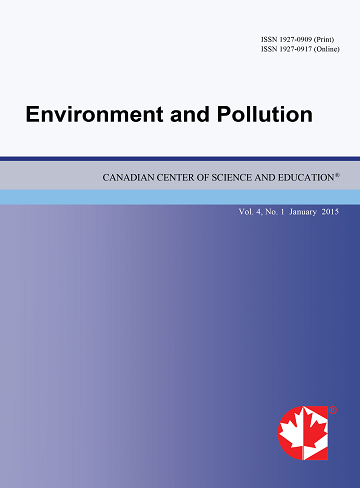On-site Sanitation Influence on Nitrate Occurrence in the Shallow Groundwater of Mahitsy City, Analamanga Region, Madagascar
- Mamiseheno Rasolofonirina
- Voahirana Ramaroson
- Raoelina Andriambololona
Abstract
Nitrate contamination of groundwater has inclined to be a critical issue in areas where groundwater is the only available resource for water supply for drinking use purpose. In developing countries such as Madagascar, on-site sanitation can be a significant source of nitrate contamination of shallow groundwater, depending on the type of sub-surface layer and hydrogeological environment, the arrangements and behavior of sanitation, and the design of sanitation used for defecation. This study was carried out to investigate the nitrate occurrence in shallow groundwater of Mahitsy city, Analamanga Region of Madagascar, and to assess the on-site sanitation influence on nitrate concentration in drinking water well. Water samples were collected from dug wells in rainy and dry seasons.
The analytical results showed that the measured nitrate concentration was in the range of 1.5 mg/L and 580 mg/L with an average of 348 mg/L for all water samples. Thirteen out of fifteen samples had nitrate concentration exceeding the WHO guideline value (50mg/L). Data analysis indicated that nitrate concentration in dry season (average 409 mg/L) was greater as compared to rainy season (371 mg/L). However, the difference was not significant at the 0.05 level. Significant positive correlation (0.849, p < 0.01) was found between nitrate and chloride concentration with chloride/nitrogen ratio of about 1:2.23, suggesting the same source for nitrate and chloride. Nitrate concentrations of well waters were strongly correlated to distance between water wells and sanitation facilities (-0.466, p = 0.08), to water table level (-0.558, p < 0.05) and to age of water wells (0.655, p < 0.01).
- Full Text:
 PDF
PDF
- DOI:10.5539/ep.v4n2p55
Journal Metrics
Index
- Academic Journals Database
- Berkeley Library
- CAB Abstracts
- CAS (American Chemical Society)
- CNKI Scholar
- COPAC
- CrossRef
- DTU Library
- Elektronische Zeitschriftenbibliothek (EZB)
- EuroPub Database
- Excellence in Research for Australia (ERA)
- Genamics JournalSeek
- Google Scholar
- Harvard Library
- Infotrieve
- Jisc Library Hub Discover
- JournalGuide
- JournalTOCs
- LOCKSS
- Max Planck Institutes
- Mir@bel
- PKP Open Archives Harvester
- Pollution Abstracts
- Publons
- Pubmed journal list
- ROAD
- Scilit
- SHERPA/RoMEO
- Standard Periodical Directory
- Stanford Libraries
- UCR Library
- Ulrich's
- UniCat
- Universe Digital Library
- UoS Library
- WorldCat
- Zeitschriften Daten Bank (ZDB)
Contact
- Albert JohnEditorial Assistant
- ep@ccsenet.org
